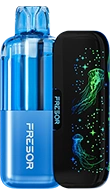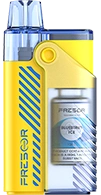How Long Does Vape Smoke Stay in the Air

9 August 2024

Vaping has become a popular alternative to traditional smoking, but many people still have questions about its impact on the indoor environment. One of the most commonly asked questions is, how long does vape smoke stay in the air? Understanding the persistence of vape smoke is crucial for those concerned about air quality, second-hand exposure, and the overall safety of vaping indoors.
Let's delve into the factors that influence how long vape smoke lingers in the air, providing you with a clearer picture of what to expect when vaping inside.
What is Vape Smoke?
Vape smoke, more accurately referred to as vapor, is a mist created by heating e-liquids in electronic cigarettes, commonly known as e-cigarettes. This process of vaporization occurs when the device's heating element—either a coil or wick—heats the e-liquid to a temperature high enough to produce an inhalable aerosol.
Unlike traditional cigarette smoke, which consists of thousands of harmful chemicals and actual smoke particles due to combustion, vape smoke is composed primarily of the aerosolized ingredients of the e-liquid.
When a user exhales this vapor, it is often termed exhaled aerosol. This exhaled aerosol typically contains substances such as propylene, vegetable glycerin, nicotine, and flavorings, but it lacks the tar and many other toxins found in cigarette smoke.
Components of Vape Smoke
To understand vape smoke, it's important to know what's in it. E-liquids are composed of propylene glycol, vegetable glycerin, nicotine, and various flavorings. When these are heated, they become a mist that people breathe in.
PG is responsible for carrying the flavor in the vapor. VG creates the dense clouds that vapers love. Nicotine provides the hit that satisfies cravings. Different devices and e-liquids produce varying amounts of each component, affecting how long the vapor lingers.
How Long Does Vape Smoke Linger in the Air?

The big question on everyone's mind is how long vape smoke lingers in the air. Generally, vape clouds from electronic cigarettes tend to dissipate rapidly, usually within 10 to 15 seconds.
This quick disappearance is largely because the particles emitted in vape smoke are much finer and less dense than those in traditional cigarette smoke. This rapid dissipation is due to the composition of vape smoke, which is primarily water vapor.
However, the duration can vary based on several factors, which we will discuss later. In general, vape smoke doesn’t stick to surfaces or fabrics as cigarette smoke does, making it less persistent in the environment.
Comparing Vape Smoke to Other Types of Smoke Particles
It's essential to compare vape smoke to other types of smoke to understand its uniqueness and potential impacts better.
Conventional Cigarette Smoke vs. Vape Smoke

Conventional cigarette smoke is a byproduct of burning tobacco. This combustion process generates smoke that contains thousands of harmful chemicals, including tar, carbon monoxide, formaldehyde, and various carcinogens.
These harmful substances lead to respiratory diseases, cardiovascular issues, and cancer. Moreover, cigarette smoke stays in the air and sticks to surfaces, leading to lasting second-hand smoke exposure and the unpleasant "smoker's smell" that can be hard to get rid of from clothes, furniture, and cars.
In contrast, vape smoke, or vapor, is produced by heating e-liquids rather than burning tobacco. The absence of combustion means that vape smoke contains significantly fewer harmful chemicals. While it does include substances like propylene glycol, vegetable glycerin, nicotine, and flavorings, it lacks the tar and many toxic compounds found in cigarette smoke. Vape smoke dissipates more quickly and doesn't cling to surfaces, making it a less persistent pollutant.
Marijuana Smoke vs. Vape Smoke
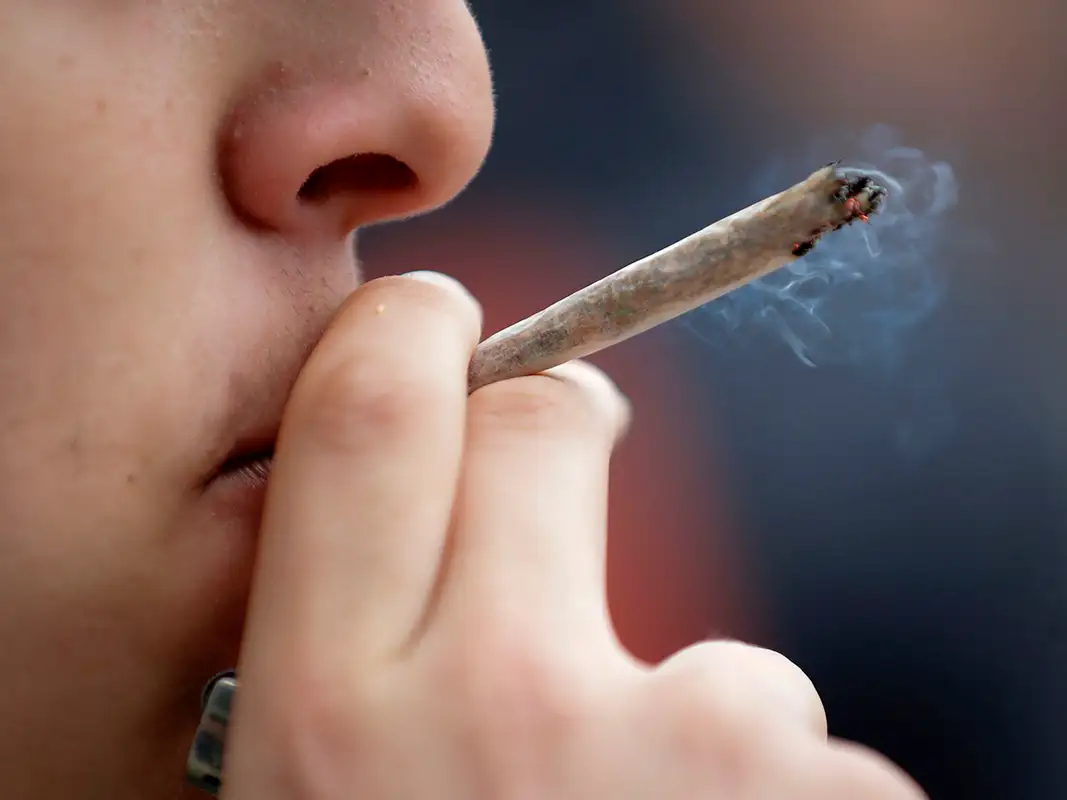
Marijuana smoke, similar to smoking conventional cigarettes, is generated through combustion. When marijuana is burned, it releases a mixture of chemicals, including cannabinoids (like THC and CBD), tar, and various other hydrocarbons.
Inhalation of marijuana smoke exposes the user to these compounds, along with potential carcinogens and respiratory irritants. Marijuana smoke also tends to linger in the air and adhere to surfaces, much like cigarette smoke, contributing to prolonged exposure to its constituents.
Vaping marijuana involves heating its active ingredients to create a vapor instead of smoke. This approach minimizes the formation of tar and harmful chemicals. Consequently, marijuana vapor is less harmful and dissipates quickly compared to cigarette smoke.
Factors Affecting Vape Smoke Duration
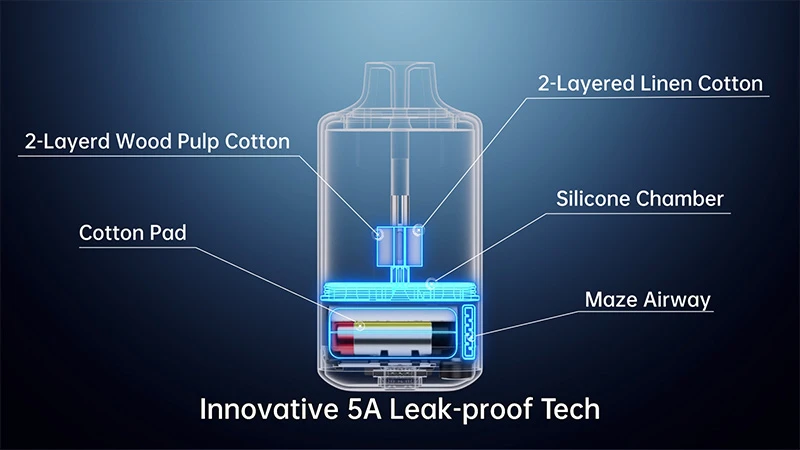
Several factors influence how long vape smoke stays in the air, ranging from the type of vape device to the composition of the e-liquid.
Types of Vape Devices
One of the most significant factors is the type of vape device used. Different devices produce varying amounts of vapor, with sub-ohm devices known for creating larger clouds that may linger slightly longer than those created by smaller, less powerful devices.
Composition of E-Liquids
Another key factor is the components of the e-liquid. E-liquids are generally made up of propylene glycol (PG), vegetable glycerin (VG), nicotine, and various flavors. The proportion of these ingredients affects how long the vapor lingers in the air; more VG results in thicker clouds that last longer.
Vapor Production and Temperature
The quantity of vapor produced and the temperature at which the e-liquid is heated play crucial roles. When the temperature is higher, it generally creates more vapor, and this vapor can stay in the air longer. However, it also tends to spread out quickly because it has more energy.
Environmental Influences

Environmental factors can also impact how long vape smoke stays in the air. Humidity, temperature, and air circulation can all affect the duration of vapor clouds. Higher humidity levels tend to cause vapor to dissipate more quickly, while lower humidity may make it linger longer.
Indoor vs. Outdoor Settings
The setting in which vaping occurs significantly impacts how long vape clouds remain in the air. In outdoor settings, natural ventilation quickly disperses smoke, making them less likely to be a concern for air quality.
Conversely, indoor environments can accumulate aerosolized particles, resulting in elevated concentrations in the surrounding air. The lack of natural airflow in enclosed spaces can cause these particles to linger longer, potentially affecting indoor air quality.
Ventilation and Airflow
Ventilation plays a critical role in dispersing vape aerosol. Well-ventilated areas dilute the concentration of e-cigarette vapor, reducing the likelihood of high particle concentrations.
Airflow from HVAC systems or open windows can significantly decrease the time vape clouds linger indoors.
Proper ventilation not only helps in dispersing vape aerosols but also diminishes the accumulation of residues on surfaces, which is a significant benefit compared to traditional cigarettes.
Humidity and Temperature Conditions
Environmental humidity and temperature also influence how long vape clouds persist.
Higher humidity levels can cause aerosol particles to clump together and fall out of the air more quickly, whereas dry conditions may allow particles to stay airborne longer.
Similarly, temperature plays a role; warmer air can speed up the dispersal process, while cooler temperatures may cause vape clouds to linger.
Secondhand Vape Exposure

Although vaping is frequently viewed as less detrimental than smoking, there are still concerns regarding the exposure to secondhand e-cigarette vapor.
Risks Associated with Secondhand Vapor
Exposure to secondhand vapor is often viewed as posing fewer health risks than exposure to secondhand smoke. However, it can still pose risks, particularly for vulnerable populations such as children, pregnant women, and individuals with respiratory issues. The potential hazards are primarily influenced by the levels of nicotine and various chemicals present in the vapor.
Vulnerable Populations
Children and pregnant women are particularly susceptible to the potential risks of secondhand exposure. Even though the risks are lower than those associated with traditional cigarette smoke, it’s still advisable to avoid vaping around these vulnerable groups.
Ways to Reduce Second-Hand Vape Exposure
Vape Outdoors: Ensure vaping is done outside to prevent vapor from accumulating indoors.
Ventilation: Utilize fans or air purifiers to enhance airflow and improve ventilation in indoor areas where vaping takes place.
Designated Vaping Areas: Establish specific areas for vaping to limit exposure to non-vapers, especially in shared environments.
Avoid Vaping Around Vulnerable Individuals: Keep a safe distance from children, pregnant women, and people with respiratory conditions while vaping.
Proper Maintenance: Regularly clean and maintain vape devices to reduce the potential release of residual chemicals.
Educate: Inform others about the potential risks of second-hand vape exposure and encourage considerate vaping practices.
Health and Safety Considerations
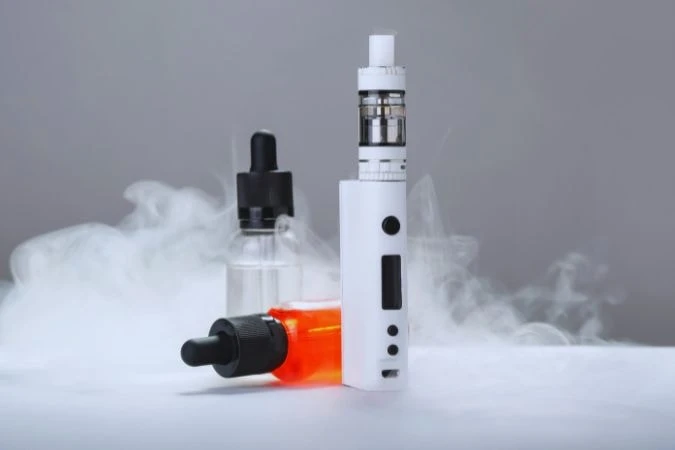
The health and safety implications of lingering vape smoke are crucial for both users and those around them. Some of the major consideration include:
Potential Effects of Lingering Vape Smoke
While vape smoke may disappear relatively quickly, the nanoparticles contained in the vapor can still pose health risks. These particles are small enough to penetrate deep into the respiratory system and may contain harmful substances such as nicotine, heavy metals, and other toxic chemicals.
Continuous exposure to these particles, even in low concentrations, can exacerbate respiratory issues and contribute to cardiovascular problems over time. It's essential for both vapers and non-vapers to be aware of these potential risks and to take steps to minimize exposure.
Secondary Vape Exposure
Even though secondhand vape exposure is generally considered less harmful than secondhand cigarette smoke, it is not completely free of risk.
Vulnerable groups, such as children, pregnant women, and individuals with existing health conditions, may be more susceptible to the negative effects of inhaling vape emissions.
Therefore, it's crucial to practice good habits, such as vaping in well-ventilated areas or outdoors, and avoiding vaping around those who are more vulnerable.
Ways to Reduce Vape Smoke in Enclosed Spaces
Reducing vape smoke in the air can be beneficial for both personal and public health. Here are some practical tips:
Improve Ventilation: Use fans, open windows, or air purifiers to enhance airflow and disperse vapor more quickly.
Choose the Right E-Liquids: Opt for e-liquids with higher PG content if you prefer less lingering vapor.
Vape Responsibly: Be mindful of where and when you vape, especially in the presence of others.
Limit Indoor Vaping: Avoid vaping in enclosed spaces whenever possible. Stick to outdoor areas or designated vaping zones to minimize the accumulation of vapor in indoor environments.
Regular Cleaning: Clean surfaces where vaping frequently occurs. Residue from vapor can settle on surfaces over time, and regular cleaning helps maintain a healthier indoor air quality.
FAQs
1. Does vape smoke linger longer than cigarette smoke?
Vape smoke typically disperses more quickly than cigarette smoke because its particles are lighter and less dense.
2. Can secondhand vape exposure be harmful?
Yes, while less harmful than secondhand cigarette smoke, secondhand vape exposure can still pose risks, especially to vulnerable individuals.
3. Are there safer vape products to reduce secondhand exposure?
While no vaping product is entirely without risk, choosing lower nicotine content and e-liquids with fewer chemicals can potentially reduce the harmful effects of secondhand exposure.
4. What methods can you use to reduce vape residue on surfaces?
Regular cleaning of surfaces and good ventilation can help minimize vape residue. Additionally, using air purifiers can aid in reducing particles that settle from vapor.
Bottom Line
While vape smoke tends to dissipate more quickly than traditional cigarette smoke, it can still pose various health and safety risks, particularly for vulnerable populations. Factors like humidity, temperature, and ventilation play significant roles in determining how long vape smoke stays in the air.
By following best practices such as vaping outdoors, improving indoor airflow, and limiting vaping around non-vapers, we can mitigate these risks and ensure a healthier environment for everyone. Responsible vaping not only benefits personal well-being but also promotes public health and safety.


